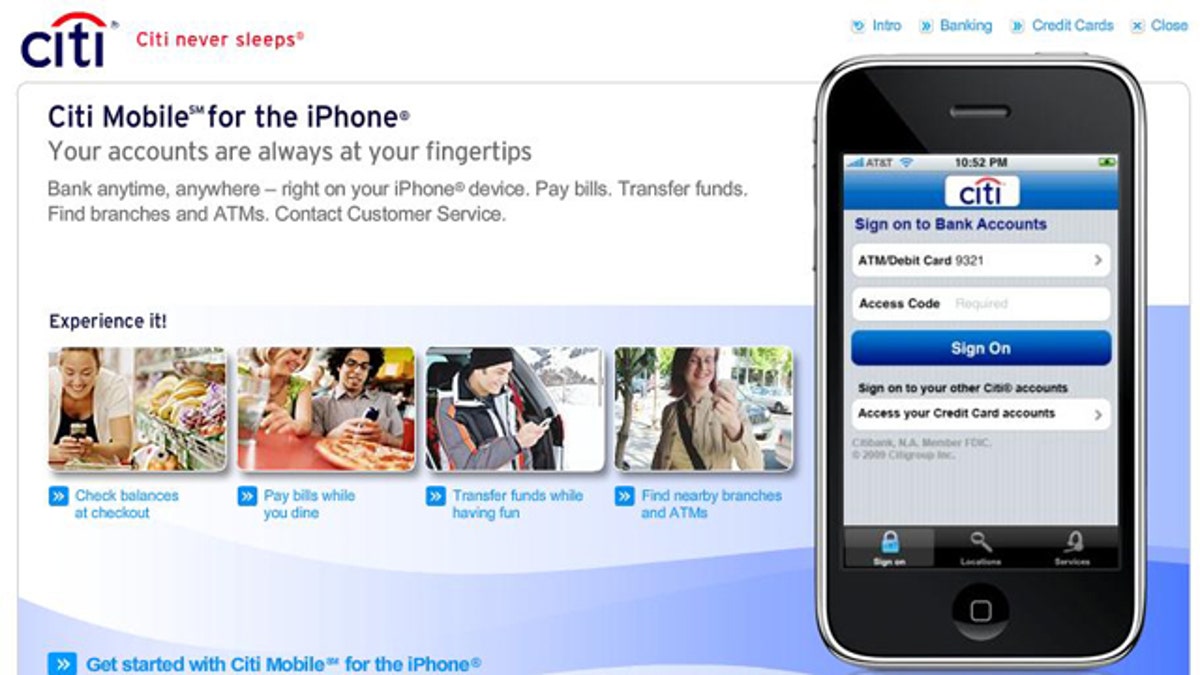
Citibank's iPhone app was accidentally storing user data, the company announced Monday. (Citibank)
In the past year, banks and credit unions across the country have rolled out mobile banking services for smartphones and tablets to meet a rapidly rising demand. The ease and efficiency of mobile banking is its greatest advantage, allowing consumers to make payments, check balances, transfer funds, speak with bank or credit union representatives, and quite often, deposit checks, without ever entering a branch.
Latinos have significantly increased their usage of bank products, especially mobile banking, so the future of banking will largely depend on how they choose to conduct their finances.
Latinos: A Rising Force in Banking
Recent studies have shown that the Latino community is a huge market for financial products. A 2012 report from Packaged Facts indicated that between 2004 and 2011, the number of Latinos with debit/ATM cards increased by 115 percent, while the number of non-Latinos with debit/ATM cards grew just 51 percent. During that same period, the number of Latino credit card holders grew 23 percent, while the number of non-Latino credit card holders fell 7 percent. The Latino community continues to encompass a larger percentage of the total American banking population, lending them an influence on the growth of banking as an industry. Banks and credit unions depend on a large and loyal customer base, and by offering a range of secure financial products and services they can court more Latino customers and ensure their own success.
The Landscape of Mobile Users
A March report by the Federal Reserve illustrated the importance of mobile banking options, indicating that 60 percentof Hispanic mobile phone owners have smartphones. The report also showed that among those surveyed, Hispanics were the most interested in adopting mobile banking programs. ThinkNow Research, a Hispanic market research company, and Zpryme came to a similar conclusion, in a report also released in March. They concluded that 69 percentof Hispanics use smartphones for mobile banking, and 30 percentsaid they would switch banks for better mobile service. The high interest in mobile service will drive how credit unions and banks approach future endeavors. If mobile banking is what Hispanics are most interested in, then banks and credit unions will divert the most attention to meeting that demand.
Will Branches Go the Way of the Dodo?
In the wake of mobile banking’s popularity, the necessity of having physical bank branches has come into question. If consumers can track their accounts and deposit checks on their smartphone or tablet, do they need an actual bank location? We may soon reach a point when all loans will be processed and distributed, and all accounts will be signed up for and accessed without ever meeting in-person with a bank or credit union representative. This isn’t assured. Many consumers feel less secure conducting bank transactions (other than balance checks) on their smartphones, leaving important financial matters for in-person interactions. While mobile service is an increasingly important aspect to personal finance, banks and credit unions can also provide personalized service and the promise of a safe place to store your money.
The Future of Mobile Banking
Mobile banking is the future. Its accessibility—the ability to track and manage your finances from your smartphone or tablet—makes for an appealing option. Latinos have been shown to be major users of mobile technology and have helped to counteract weaker debit and credit card usage among other demographics in recent years. Banks and credit unions are in a unique position to cater to the Latino community by meeting their high demand for mobile accessibility, while still offering in-person service and a range of financial products. If they can create a stable and beneficial banking relationship with the Latino community, banks and credit unions can help to ensure their own success in the mobile age.
Nico Leyva writes for Nerdwallet, a personal finance website dedicated to helping consumers make better banking decisions and find the best free checking account.
